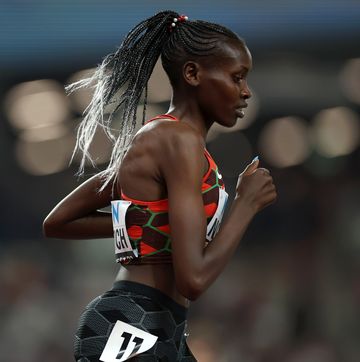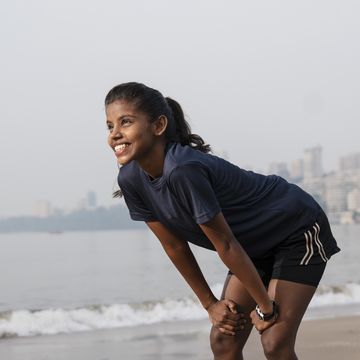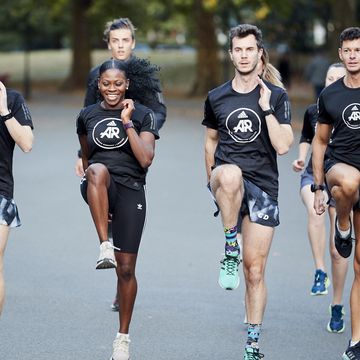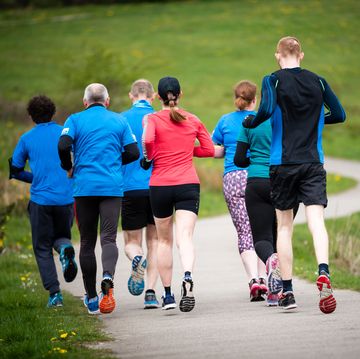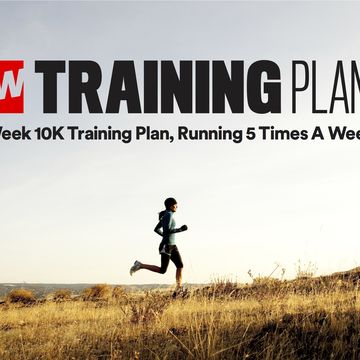After running countless 10Ks and coaching runners who have run countless more, I’ve found one workout to be the best to prepare you for the distance. It’s not easy and you probably can’t do it right away, so you’ll need to build up to it with the sequence of workouts outlined here, which, when combined with supplementary sessions, create an exceptional training plan for your next goal 10K.
The best 10K workout
3 x 2 miles
If you can perform three two-mile repeats at your goal 10K pace in the final one to two weeks before your big race, you will achieve your goal time. Guaranteed. It’s a simple workout but, make no mistake, it’s oh-so-hard to accomplish. As such, you must become used to the effort involved, and this build-up of tough workouts is some of the best training you can do to run a fast 10K.
Build-up workout 1
6 x 1 miles
Eight weeks out from your 10K, run six one-mile repeats at your goal 10K pace, taking three to four minutes of a recovery jog between each repeat. Don’t be remotely surprised if you struggle during this workout. Many athletes (even experienced runners) become worried at some point in their training that their goal time is out of reach, but trust me: you just need to complete the workout sequence and you’ll be ready.
One thing I find that helps is to just focus on your goal 10K pace, not faster. Some runners try to ‘beat the workout’ by running faster but that isn’t the goal. Start at goal pace and simply hang on.
Build-up workout 2
2 miles + 4 x 1 mile
Six weeks out from your 10K, advance to the following workout: run a two-mile repeat at your goal 10K pace, then take a five-minute recovery jog. Next, run four one-mile repeats at goal 10K pace, taking three to four minutes of a recovery jog between each. As with workout 1, you will get in six miles of running at your goal pace (10K is 6.2 miles).
Build-up workout 3
2 x 2 miles + 2 x 1 mile
Four weeks out from the race, the workout advances again. This time, run two two-mile repeats at goal 10K pace. Again, take a five-minute recovery jog after each two-mile repeat. Then, perform two one-mile repeats at goal pace, taking three minutes of recovery between each. By now, you should be feeling much more ready to attack your goal time. Your body is becoming used to the mental and physical stress of 10K pace. If, however, you’re struggling to hit your goal pace even on the first two-mile repeat, then your proposed goal pace is too aggressive and you should re-evaluate.
The world's best 10K workout
After this – admittedly challenging – build-up of workouts, you’re ready to attack the ultimate 10K workout. I suggest you perform this workout nine to 12 days before your race to allow enough time to fully recover before the event. Start with your usual warm-up (which you should also perform for each workout described in this article), then run three two-mile repeats at your goal 10K pace. Take a five-minute recovery jog between each repeat. You should prepare for this intense workout as you will for your race – you need to be well recovered, properly hydrated and fuelled, wear the shoes and apparel you’ll use in the race and, ideally, run at the time of day that you’ll be racing.
Supplementary workouts
While the 10K build-up workouts should be carried out every other week, the in-between weeks provide a great opportunity to perform other important 5K and 10K workouts. I like 200m and 400m repeats performed at 5K effort. I find that running slightly faster repeats in those in-between weeks makes 10K race pace feel easier. You may even perform a 5K race in preparation for your 10K. I also recommend at least one tempo run during this build-up. The pace will be slightly slower than your 10K pace but will build the stamina you will need for the goal event.
How to nail your fastest 10K
1. Warm up well
After an easy jog, do four minutes, starting at your marathon pace and accelerating to threshold pace. Do this about 10 mins before the start.
2. Start steady
Don’t run the first couple of miles faster than target pace. Staying controlled early on sets you up to run an even pace or a negative split.
3. Latch on
Once you’re a couple of miles in, latch on to a runner or group moving at your pace or
a little faster. Research in the Journal of Sports Sciences found that athletes who ran in a pack of similar ability slowed down less over the course of a race.
4. Focus
Thinking about the finish in the middle of the race can distract you. Just focus on racing. ‘Try focusing on your technique,’ says Professor Andy Lane, a sports psychologist. ‘I encourage athletes to focus on their arm action, as the arms will feel less tired than the legs. Swinging them naturally should help with rhythm.’
5. Hold on
Expect the pace to feel tough from four miles in. ‘It’s part of racing a 10K, so prepare for it mentally,’ says running coach Jeff Gaudette.



